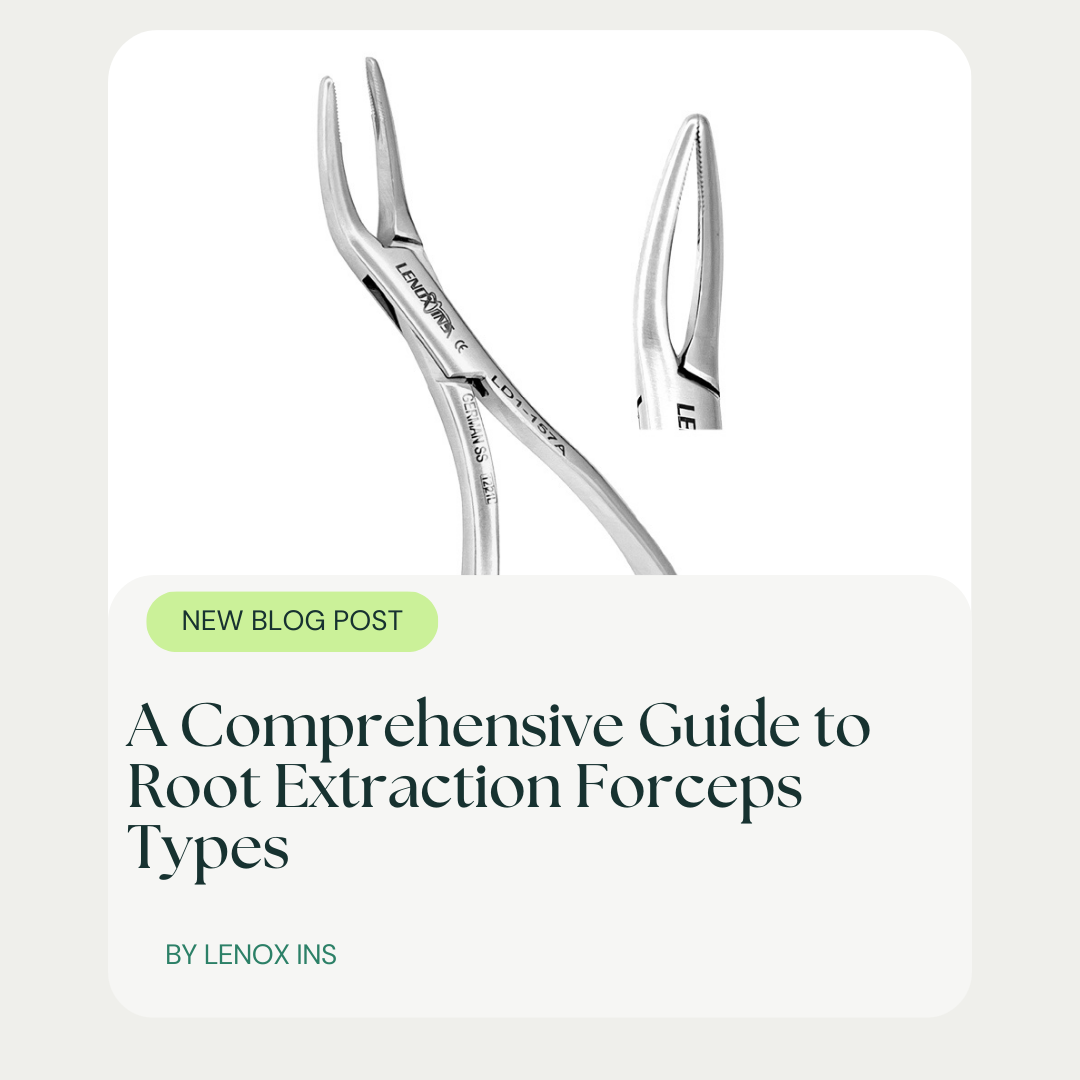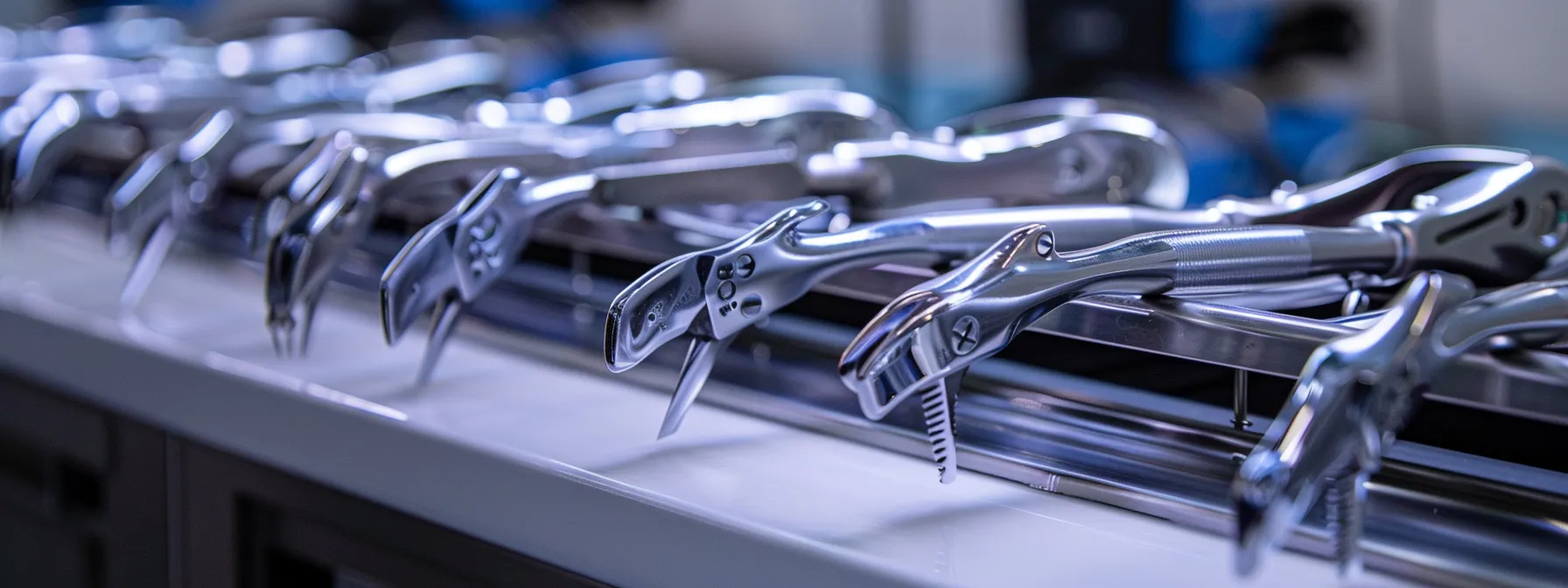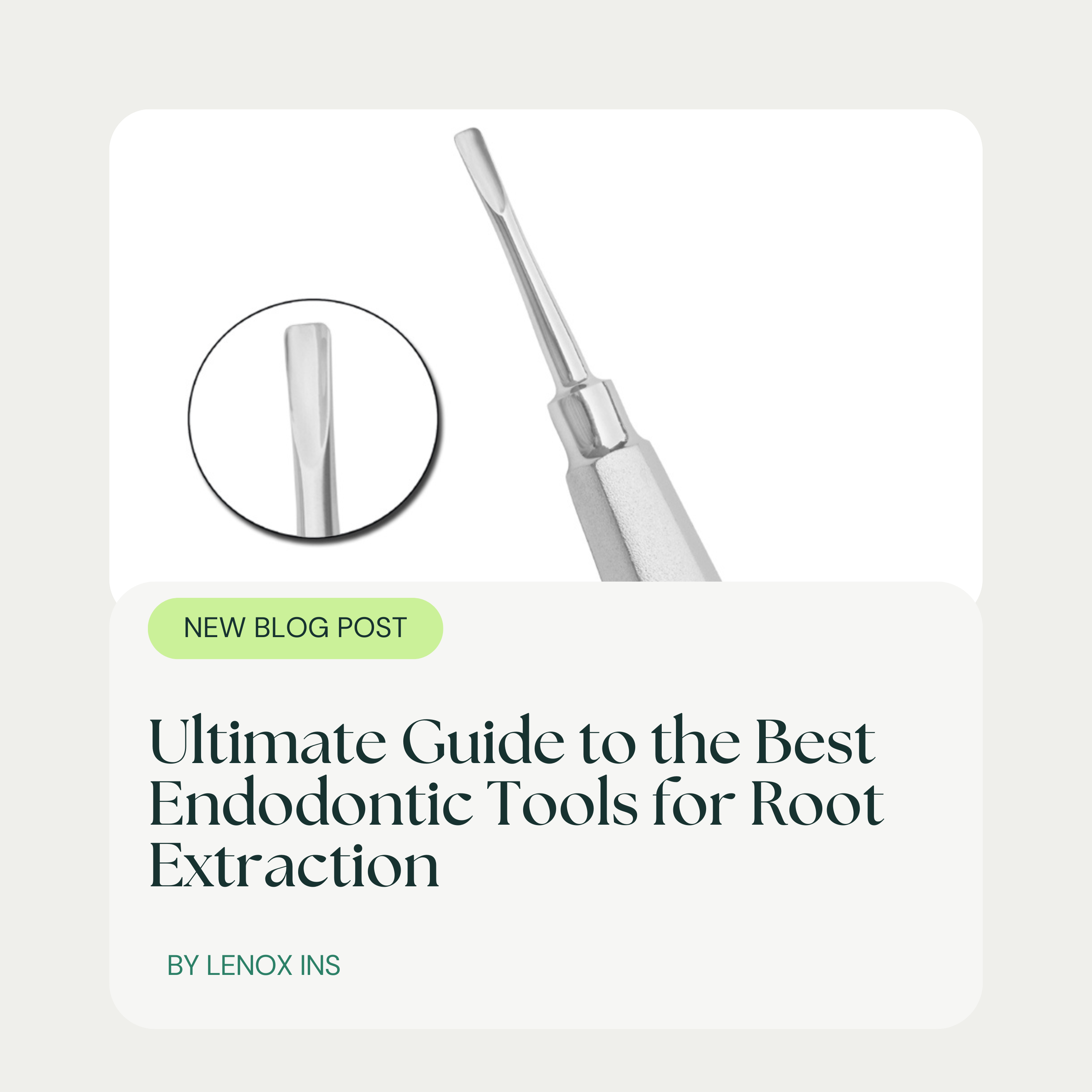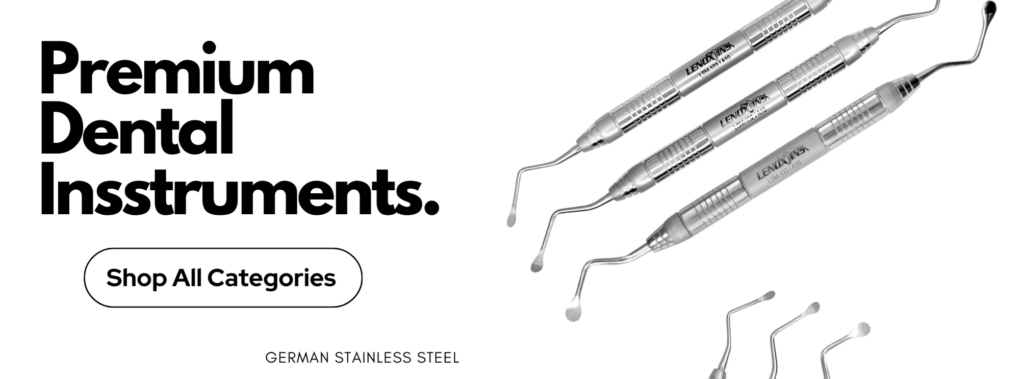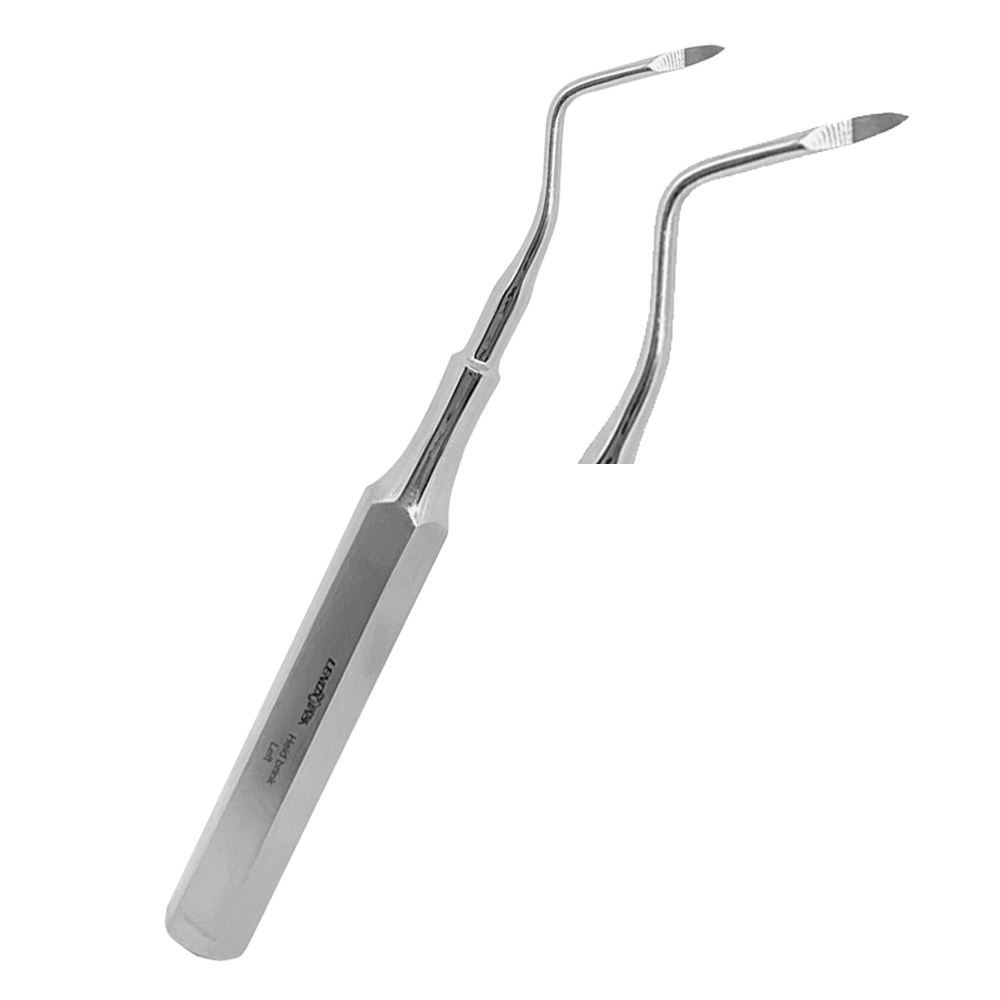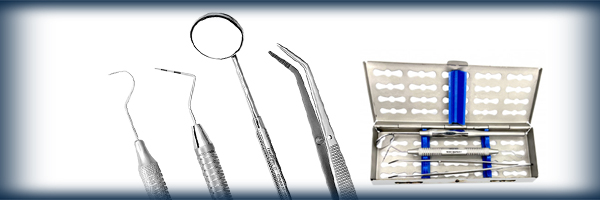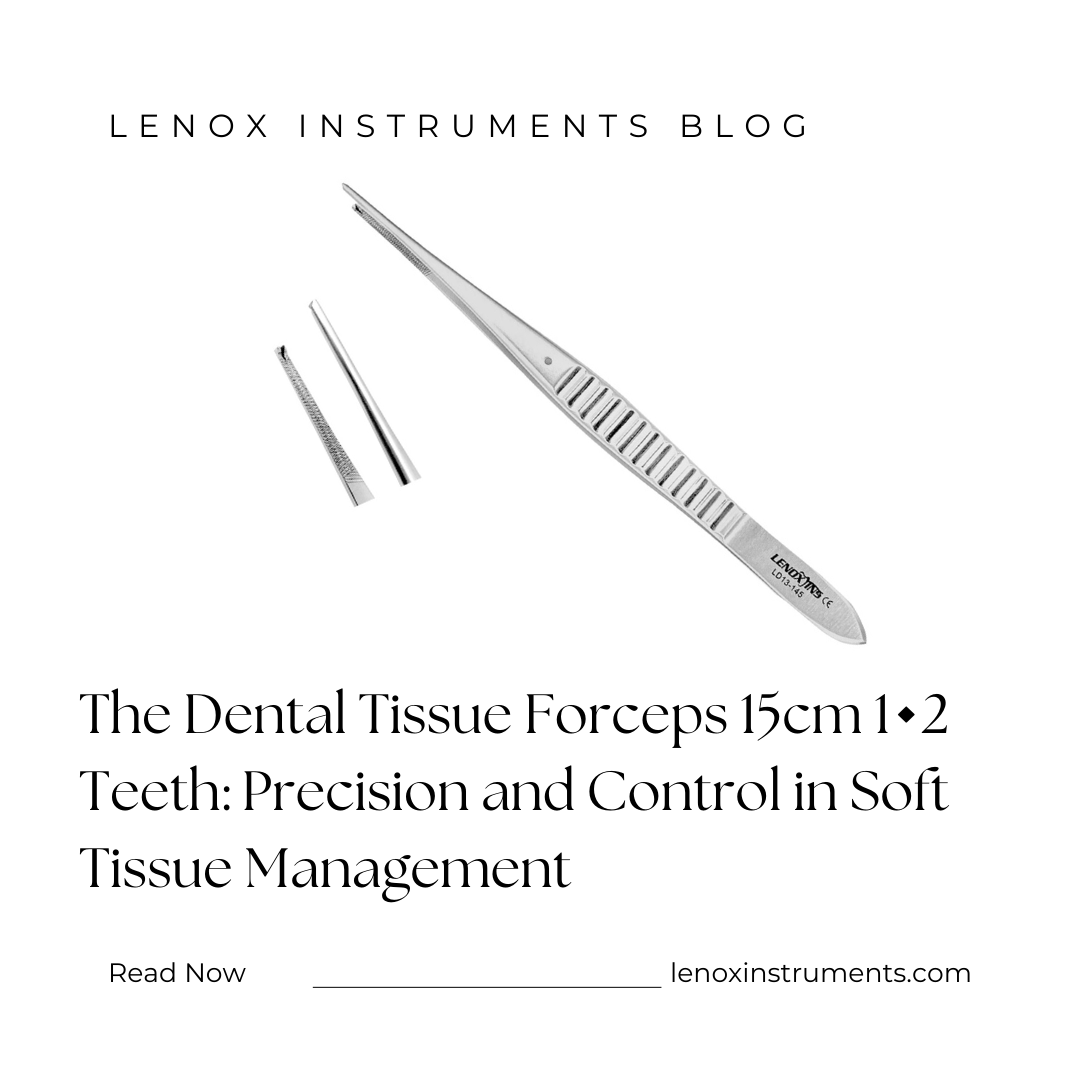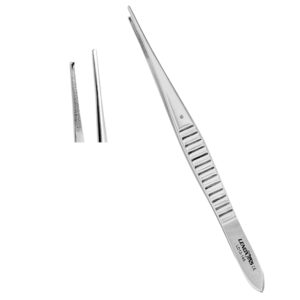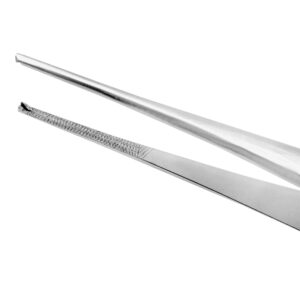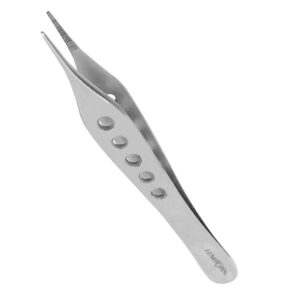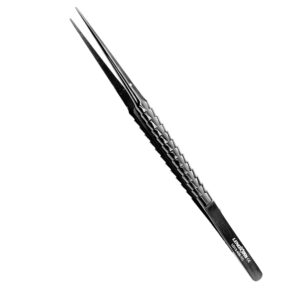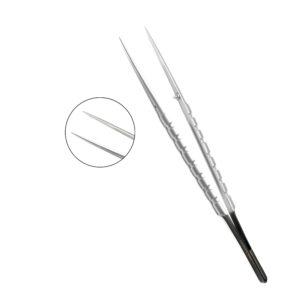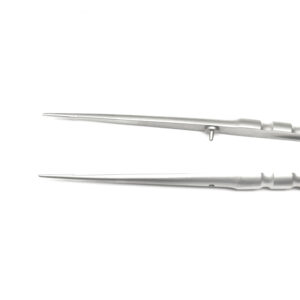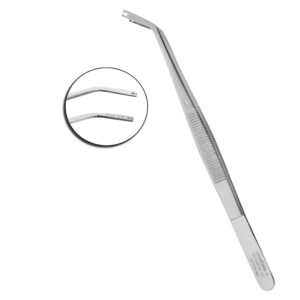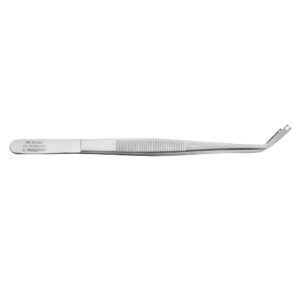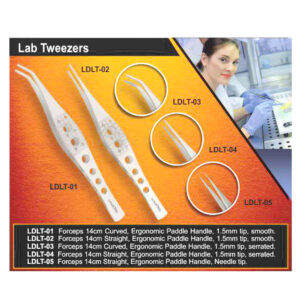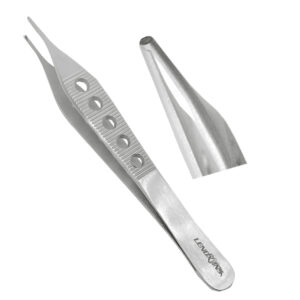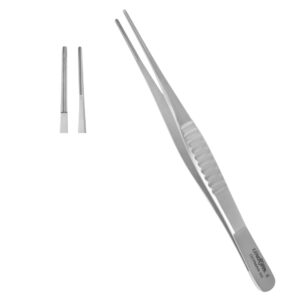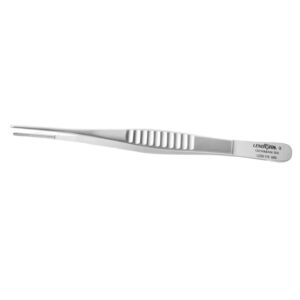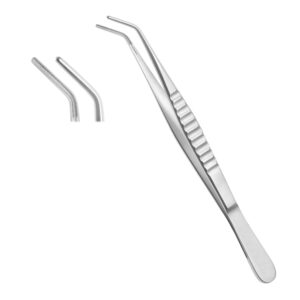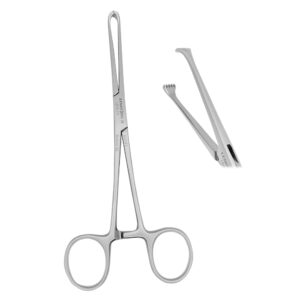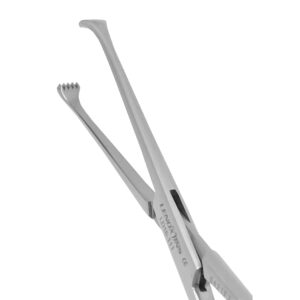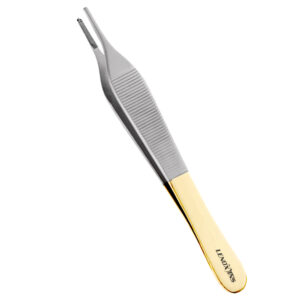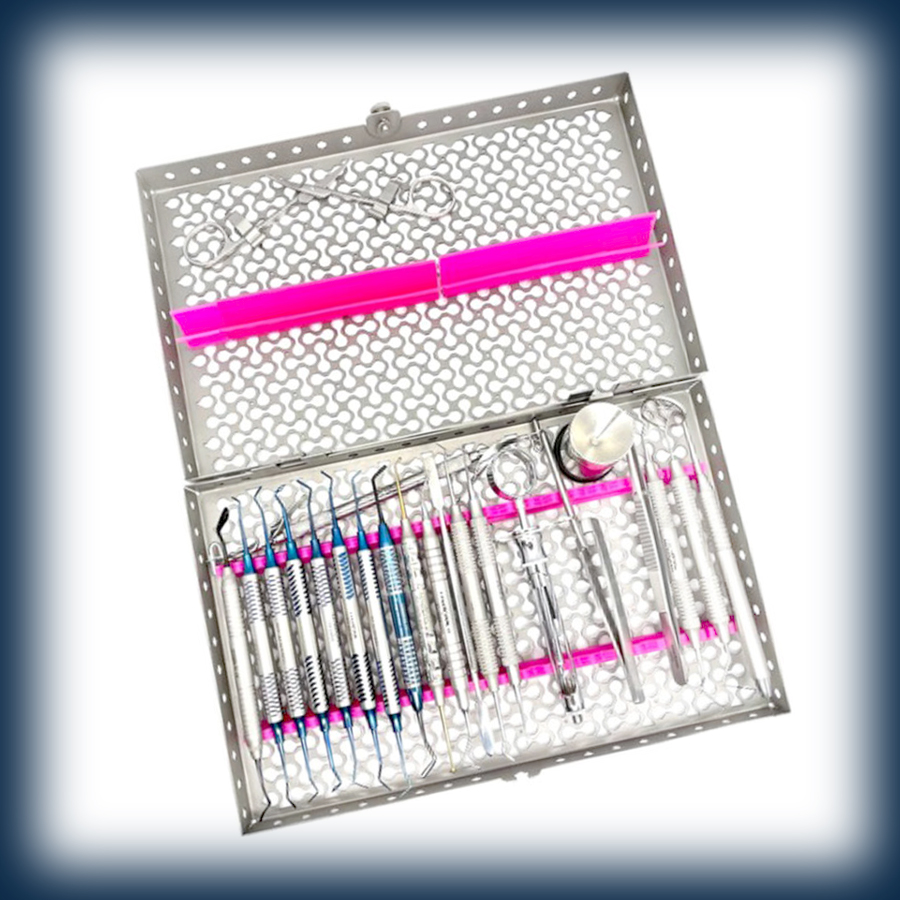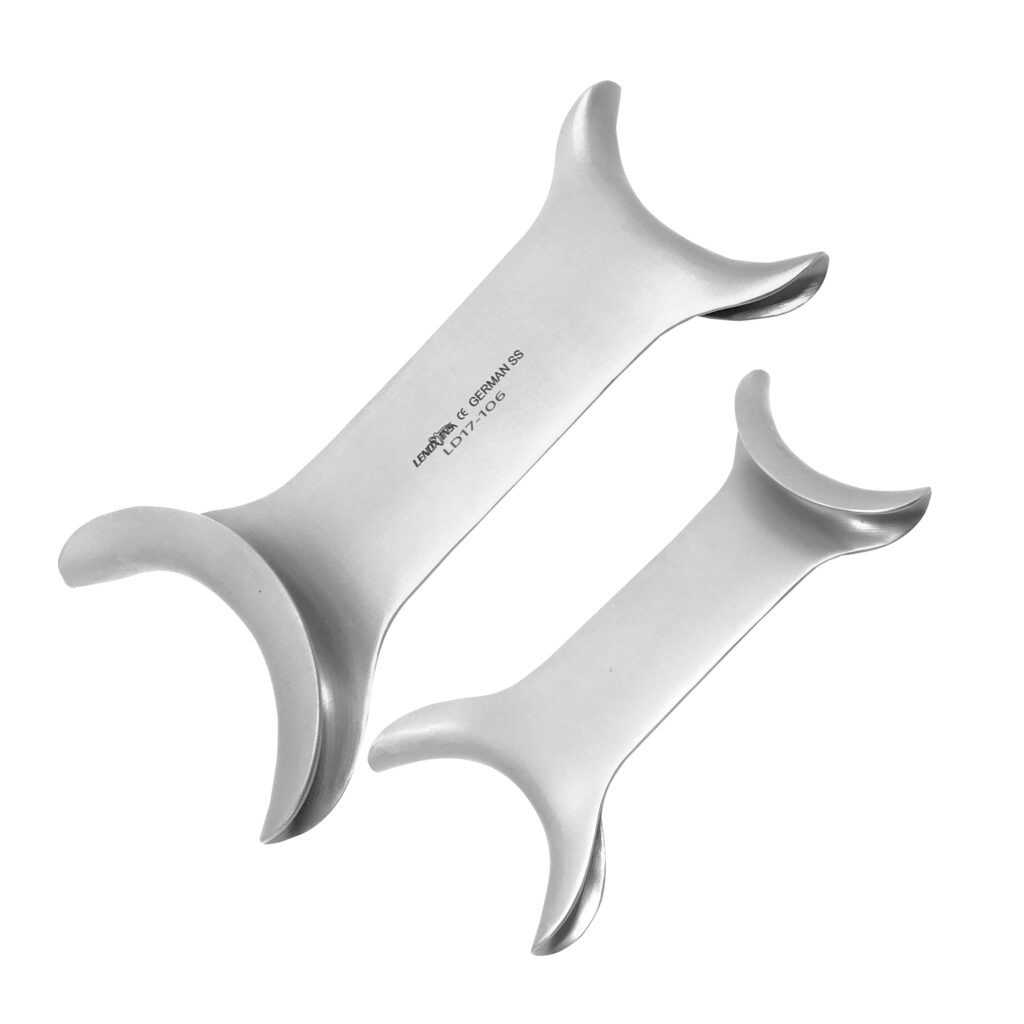Ultimate Guide to Selecting Upper Molar Extraction Forceps
- Posted October 16, 2024
- by lenoxinstro
Choosing the right upper molar extraction forceps is crucial for successful procedures in endodontics. Many dental professionals face challenges with forceps that don’t provide adequate grip or precision, risking patient discomfort or infection. This guide will cover the types of stainless steel forceps available, key factors to consider when selecting them, and proper techniques for effective use. By understanding these elements, dentists can enhance their efficiency and patient care during upper molar extractions, ensuring a safer experience for both the mouth and jaw.
Key Takeaways
- Upper molar extraction forceps are essential tools for safe, efficient upper molar removals
- An ergonomic design enhances handling and minimizes trauma during dental extractions
- Selecting compatible forceps is crucial for effective removal based on molar anatomy and eruption status
- Proper cleaning and maintenance protocols ensure the longevity and safety of dental instruments
- Regular inspection for wear is necessary to maintain instrument effectiveness and patient care standards
Understanding Upper Molar Extraction Forceps
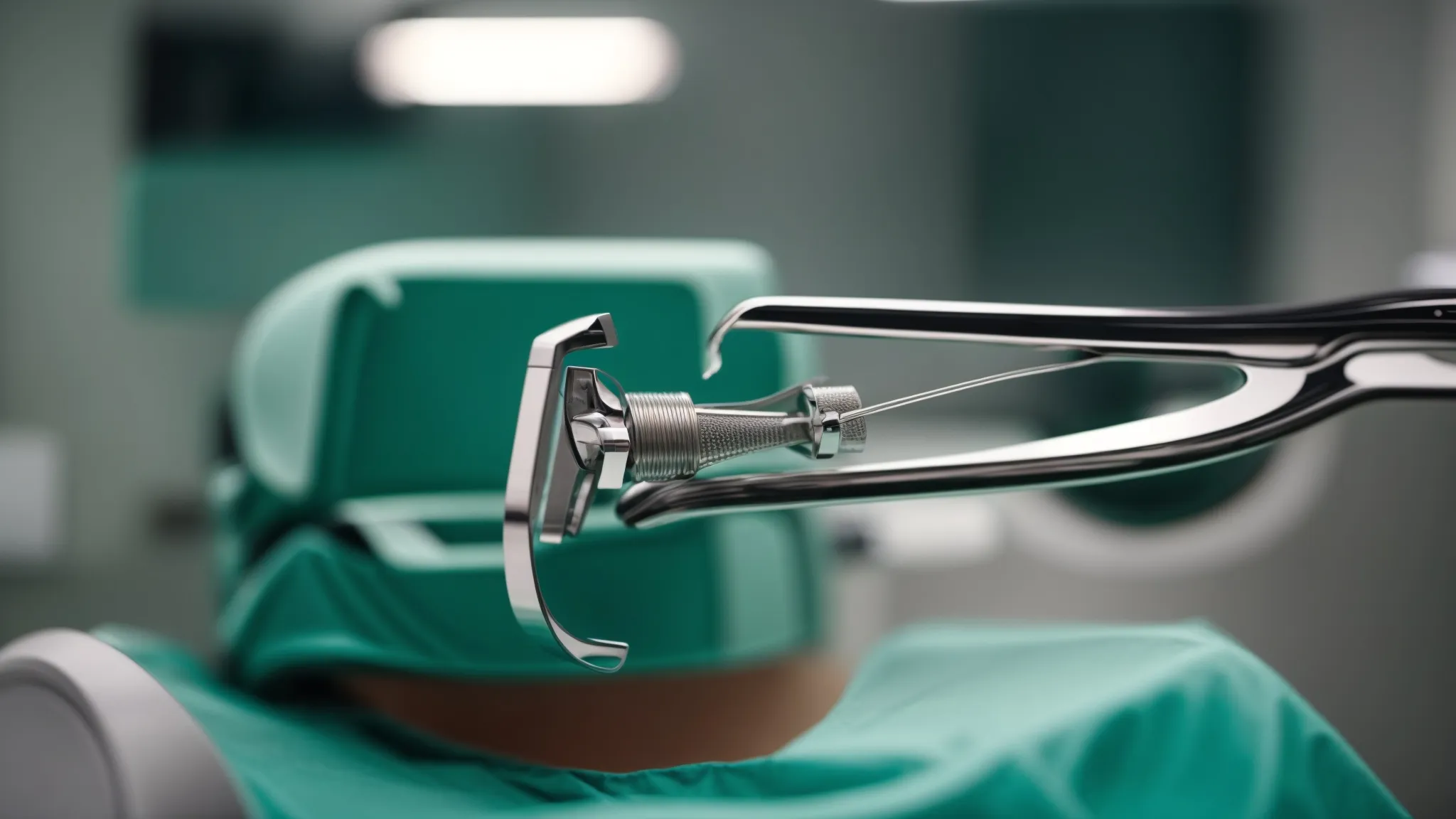
Upper molar extraction forceps are specialized dental tools designed for the efficient removal of upper molars during surgery. Key features to consider include quality craftsmanship, ergonomic designs for optimal handling, and differences between upper and lower molar forceps. Common materials and their benefits, as well as the importance of hygiene protocols, such as using cotton and personal protective equipment, will also be discussed in the following sections.
What Are Upper Molar Extraction Forceps?
Upper molar extraction forceps are specialized dental instruments designed specifically for the removal of upper molars. Their design allows practitioners to apply precise pressure while minimizing trauma to surrounding tissues, which is especially important in procedures such as sinus lifts where the integrity of the sinus cavity must be maintained. In conjunction with other tools like scalpels for incisions and rongeurs for bone removal, these forceps ensure efficient extractions while being subject to stringent hygiene protocols, including sterilization in an autoclave to prevent infections.
Key Features to Look for in Quality Forceps
When selecting upper molar extraction forceps, practitioners should prioritize specific features to ensure optimal performance and safety. The ergonomic design is crucial; it allows for better handling, reducing the risk of injury during the extraction process. Additionally, quality forceps should align with the anatomy of the molar and premolar regions, enabling precise removal and decreasing the likelihood of complications associated with diseases affecting the oral cavity.
- Ergonomic design for enhanced handling
- Compatibility with molar and premolar anatomy
- Safety features to minimize injury
Differences Between Upper and Lower Molar Forceps
The differences between upper molar extraction forceps and lower molar forceps are significant in both design and application, impacting the extraction process for patients. Upper molar forceps are specifically tailored to suit the anatomy of the maxilla, featuring a wider beak to accommodate the upper molars’ larger size and the unique curvature of the upper jaw. In contrast, lower molar forceps are designed to grasp teeth positioned in the mandible, often requiring a different angle and force for effective extraction, sometimes used in conjunction with other instruments like a curette or needle holder to ensure a smooth procedure.
Common Materials and Their Benefits
Upper molar extraction forceps are typically constructed from high-quality stainless steel, which provides strength and durability necessary for the demands of dental procedures. This material is resistant to corrosion and allows for effective sterilization, ensuring that all surfaces are free from pathogens after use. The design of the beak is critical, as it needs to effectively grasp tissue while minimizing any potential trauma; thus, the combination of the steel strength and appropriate shape enhances the overall extraction process, leading to better patient outcomes.
Ergonomic Designs for Optimal Handling
Ergonomic designs are crucial for upper molar extraction forceps, as they significantly enhance handling during dental extractions. Quality stainless steel forceps are shaped to fit the contours of the dental crown and molar area, allowing practitioners to maintain a secure grip while minimizing discomfort. This thoughtful design reduces the exertion needed, which can lead to more precise and controlled movements, ultimately improving patient outcomes during complex extractions or when using accompanying instruments like elevators.
| Feature | Benefit |
|---|---|
| Ergonomic Shape | Enhances grip and control |
| Stainless Steel Material | Ensures durability and easy sterilization |
| Compatibility with Crown and Molar Anatomy | Reduces risk of oral trauma during extractions |
Understanding the tools of the trade is crucial for any dentist. Now, let’s look at the different types of upper molar extraction forceps that make this important work possible.
Types of Upper Molar Extraction Forceps
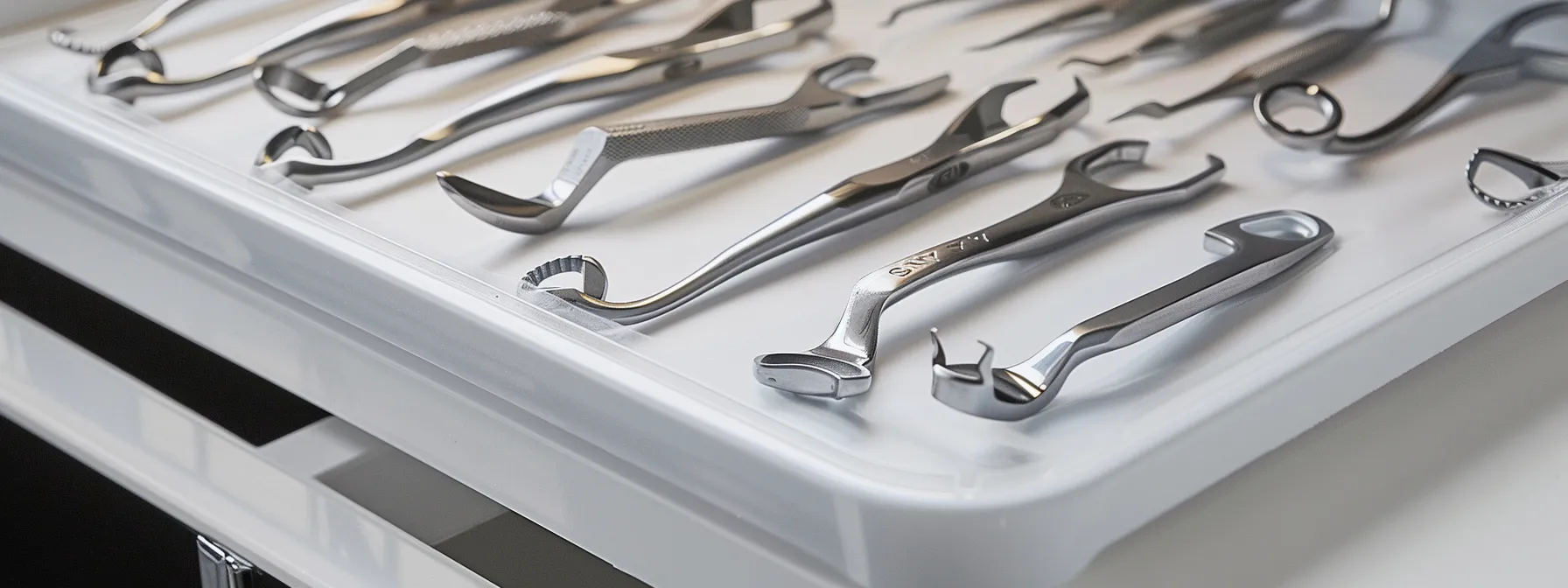
Types of Upper Molar Extraction Forceps
Understanding the various types of upper molar extraction forceps is essential for making informed choices. This section covers standard upper molar forceps, which are designed for routine extractions, followed by the distinct right and left upper molar forceps for more precise applications. Additionally, bayonet-shaped forceps are explored for their specialized uses, while cowhorn forceps offer unique benefits for upper molar extraction. Finally, specialized forceps for third molars, often in conjunction with local anesthetic, are examined, ensuring a thorough approach to effective dental procedures. upper molar right black gold
Standard Upper Molar Forceps Explained
Standard upper molar forceps are essential tools for dental professionals, specifically designed for routine extractions of upper molars. These forceps typically feature a robust design that allows for efficient removal while minimizing trauma to the gums and surrounding tissues. In practice, practitioners often pair them with other instruments such as chisels, spatulas, and scissors to ensure a comprehensive approach during extraction procedures, including irrigation to manage any potential bleeding:
- Utilization of chisel and spatula tools for tissue manipulation
- Incorporation of scissors for cutting as needed
- Effective irrigation techniques to maintain visibility and control
Right vs. Left Upper Molar Forceps
Right and left upper molar forceps are specifically designed to match the unique anatomy of each side of the dental arch. The distinct curvature of these forceps allows for better access to the dental alveolus, ensuring a more effective grip on the tooth being extracted. Using the correct forceps for each side not only enhances the extraction process but also minimizes the risk of trauma to surrounding tissues, thereby improving recovery outcomes for patients.
Bayonet-Shaped Forceps and Their Uses
Bayonet-shaped forceps play a crucial role in dental procedures, particularly during upper molar extractions. Their unique design allows for improved visibility and access, especially in cases where adjacent anatomical structures, such as the tongue, may obstruct traditional forceps. By utilizing bayonet-shaped extraction forceps, practitioners can achieve a more secure grip on the molar, facilitating a smoother extraction process while minimizing trauma to surrounding tissues.
Cowhorn Forceps for Upper Molars
Cowhorn forceps are specialized tools designed for the extraction of upper molars, particularly effective because of their unique double-pronged design. This structure enables dental professionals to engage and loosen the tooth from its socket more effectively while minimizing the risk of damage to surrounding tissues. By employing cowhorn forceps, practitioners can achieve a secure grip on the molar, ensuring a smoother extraction process that enhances both efficiency and patient comfort:
| Feature | Benefit |
|---|---|
| Double-Pronged Design | Improves tooth engagement and stability during extraction |
| Minimal Trauma | Reduces risk to surrounding tissues |
| Enhanced Grip | Facilitates a smoother extraction process |
Specialized Forceps for Third Molars
Specialized forceps for third molars are designed specifically to address the unique challenges associated with wisdom tooth extractions. These forceps often feature angled beaks and slim profiles, allowing practitioners to maneuver in tighter spaces that are common in the posterior region of the jaw. By using these specialized forceps, dentists can achieve a secure grip and enhance the efficiency of the extraction process, ultimately leading to better outcomes for patients during these often-complex procedures: extracting forceps lower third molars fig 79
- Designed for effective handling in tight spaces.
- Includes angled beaks for better accessibility.
- Enhances the efficiency of wisdom tooth extractions.
Each type of upper molar extraction forceps serves a specific purpose, shaped by the demands of the procedure. Yet, the choice of forceps goes beyond types; certain factors must guide a practitioner to ensure effective and safe extractions.
Factors to Consider When Choosing Forceps
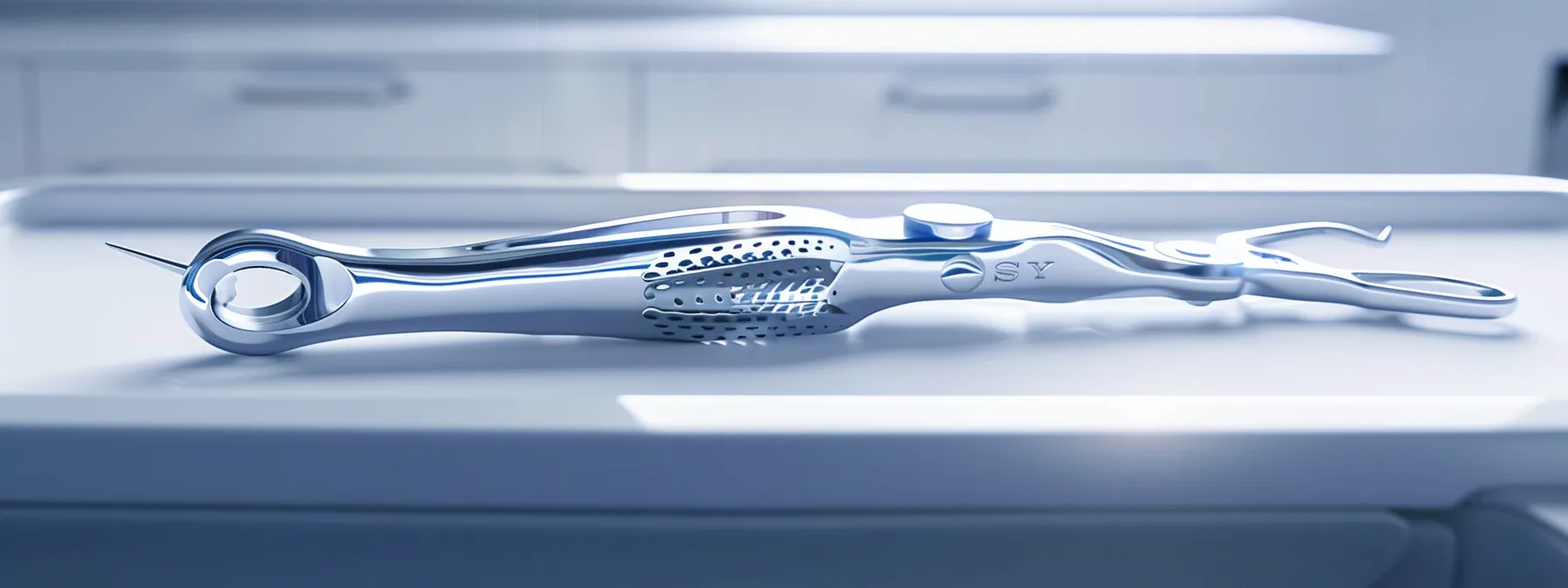
When selecting the best upper molar extraction forceps, several critical factors come into play. Assessing patient-specific needs ensures suitable forceps are chosen for individual anatomical variations. Compatibility with different molar types is essential for effective removal. Additionally, sterilization and maintenance requirements should be considered to uphold hygiene standards. Budget considerations must balance quality with affordability, while brand reputation and consumer reviews can guide informed decisions.
Assessing Patient-Specific Needs
Assessing patient-specific needs is crucial for selecting the appropriate upper molar extraction forceps. Factors such as the patient‘s anatomical characteristics, including the size and shape of their molars, can influence the effectiveness of the extraction process. For instance, practitioners should consider if the molars are fully erupted or impacted, as this may require specialized forceps to ensure a smoother and safer extraction.
| Patient Factors | Considerations |
|---|---|
| Anatomical Characteristics | Influence choice of forceps based on size and shape of molars |
| Eruption Status | Impacted teeth may require specialized tools |
| Patient Comfort | Choosing ergonomic designs to minimize discomfort |
Compatibility With Different Molar Types
When selecting upper molar extraction forceps, compatibility with different molar types is a crucial consideration. The anatomy of each molar can vary significantly, affecting the choice of extraction tools. For instance, practitioners may encounter fully erupted molars that require a different type of forceps than those used for impacted teeth. Understanding these variations enables dental professionals to choose forceps that provide a secure grip and enhance efficiency during the extraction process, ultimately improving patient outcomes.
Sterilization and Maintenance Requirements
Proper sterilization and maintenance requirements are fundamental when choosing upper molar extraction forceps to ensure patient safety and instrument longevity. Forceps should undergo sterilization in an autoclave following each use, effectively eliminating pathogens and minimizing infection risk. Additionally, routine maintenance practices, such as inspecting for wear and tear, can prolong the life of the forceps and uphold optimal performance during dental procedures.
Budget Considerations Without Compromising Quality
When considering budget constraints in the selection of upper molar extraction forceps, it is vital to strike a balance between cost and quality. Practitioners should focus on investing in forceps that offer durability and functionality without compromising on effectiveness. Researching reputable brands that provide warranties or guarantees can also ensure long-term value, as these companies often prioritize precision and safety in their products, helping to reduce the need for frequent replacements.
| Budget Considerations | Key Points |
|---|---|
| Durability | Choose forceps that withstand frequent use without wear. |
| Functionality | Invest in tools that enhance extraction efficiency. |
| Reputable Brands | Research brands offering warranties for quality assurance. |
Brand Reputation and Consumer Reviews
Brand reputation and consumer reviews play a significant role in selecting the optimal upper molar extraction forceps. Practitioners should consider products from well-established manufacturers known for high-quality dental instruments, as positive feedback often indicates reliability and effectiveness. Reading reviews can provide insight into the experiences of other dental professionals, helping to assess the performance and durability of specific forceps, thus guiding informed purchasing decisions.
| Aspect | Consideration |
|---|---|
| Brand Reputation | Focus on established manufacturers with a track record of quality. |
| Consumer Reviews | Examine feedback from other professionals for insights and experiences. |
| Performance Insights | Identify products that provide reliability and durability based on reviews. |
Choosing the right forceps can shape the outcome of a dental procedure. Now, let’s look at the top-rated brands that can make extraction easier and more effective. Consider exploring the deep gripping extracting forceps, known for their quality and effectiveness.
Top-Rated Upper Molar Extraction Forceps Brands

Exploring top-rated upper molar extraction forceps brands involves examining leading manufacturers, comparing their features and benefits, and analyzing user testimonials and feedback. This section also addresses warranty and customer support options, as well as guidance on where to purchase authentic products. Each topic provides practical insights that will assist dental professionals in making informed decisions regarding their instrument choices.
In-Depth Review of Leading Manufacturers
Leading manufacturers of upper molar extraction forceps are recognized for their commitment to quality and performance. Brands such as Hu-Friedy and Ash Instruments are well-respected in the dental community, providing forceps that meet stringent safety and ergonomic standards. Their instruments are often highlighted in user reviews for their durability and precision, making them a reliable choice for dental professionals looking to enhance their extraction capabilities.
| Manufacturer | Key Features | User Feedback |
|---|---|---|
| Hu-Friedy | Durable stainless steel, ergonomic design | Highly rated for reliability and comfort |
| Ash Instruments | Precision engineering, lightweight | Positive reviews for ease of use |
| DentalEZ | Innovative designs, optimal grip | Favored for enhanced extraction efficiency |
Comparing Features and Benefits
When comparing the features and benefits of top-rated upper molar extraction forceps brands, practitioners should focus on critical aspects such as materials, ergonomic design, and durability. Brands like Hu-Friedy and Ash Instruments are known for their stainless steel construction, which enhances longevity and facilitates sterilization. Furthermore, ergonomic designs from these manufacturers help reduce hand fatigue during extended procedures, allowing for a more controlled and efficient extraction process, ultimately addressing the needs of dental professionals seeking reliable performance:
| Manufacturer | Key Features | Benefits |
|---|---|---|
| Hu-Friedy | Durable stainless steel | Enhanced longevity and reliable performance |
| Ash Instruments | Ergonomic design | Reduced hand fatigue during procedures |
| DentalEZ | Optimal grip design | Improved extraction efficiency and control |
User Testimonials and Feedback
User testimonials and feedback provide valuable insights into the performance and reliability of upper molar extraction forceps. Many dental professionals emphasize the importance of ergonomics, noting that brands like Hu-Friedy and Ash Instruments significantly reduce hand fatigue during extensive procedures. Positive experiences often cite enhanced grip and control, which improve extraction efficiency and patient outcomes. upper molar extraction forceps
| Brand | User Feedback | Common Praise |
|---|---|---|
| Hu-Friedy | Highly efficient for routine extractions | Ergonomic design reduces hand strain |
| Ash Instruments | Preferred for precision and control | Lightweight, making prolonged use easier |
| DentalEZ | Effective for complex extractions | Optimal grip leads to fewer procedural complications |
Warranty and Customer Support Options
When selecting upper molar extraction forceps, warranty and customer support options are crucial considerations for dental professionals. Reputable brands often provide warranties that cover defects in craftsmanship and materials, ensuring that practitioners can replace any faulty instruments without incurring additional costs. Additionally, accessible and knowledgeable customer support can assist with inquiries regarding product usage, maintenance, and compatibility, thereby enhancing the overall value of the investment in dental tools.
Where to Purchase Authentic Products
Dental professionals seeking authentic upper molar extraction forceps should prioritize reputable suppliers and manufacturers to ensure they are investing in quality tools. Purchasing through established dental supply companies or directly from trusted brands like Hu-Friedy and Ash Instruments guarantees access to authentic products, often backed by generous warranties and reliable customer support. Additionally, verified online platforms that specialize in dental instruments can provide user reviews and detailed descriptions, helping practitioners make well-informed decisions on their equipment acquisitions.
The right forceps are only part of the equation; knowing how to use them matters just as much. Mastering the technique transforms a simple extraction into a smooth procedure, ensuring success with every patient.
Proper Use and Technique With Upper Molar Forceps

Understanding the proper use and technique with upper molar extraction forceps is crucial for ensuring safe and effective procedures. This section will provide a step-by-step guide to using forceps safely, highlight common mistakes to avoid during extraction, and offer tips for maximizing efficiency and patient comfort. Additionally, it will cover training resources for practitioners and outline essential post-extraction care instructions.
Step-by-Step Guide to Using Forceps Safely
To use upper molar extraction forceps safely, the practitioner should first ensure that the patient is adequately anesthetized and positioned comfortably. Once ready, the forceps should be positioned around the crown of the molar, applying steady pressure to engage the tooth while avoiding excessive force, which may damage surrounding tissues. Maintaining a firm grip on the forceps while systematically rock the tooth back and forth can facilitate a smoother extraction process, reducing pain and trauma for the patient.
Common Mistakes to Avoid During Extraction
During upper molar extractions, practitioners often make mistakes that can hinder the process and affect patient outcomes. One common error is applying excessive force when using forceps, which can lead to trauma in the surrounding tissues and increase postoperative pain. Another mistake is failing to properly assess the molar’s eruption status, as this may require different techniques or specialized forceps for optimal extraction. Attention to these details ensures a smoother procedure and minimizes risks.
| Mistake | Consequences | Solution |
|---|---|---|
| Excessive Force | Injury to surrounding tissues | Use controlled pressure and proper technique |
| Poor Assessment of Eruption Status | Increased difficulty during extraction | Evaluate tooth position before proceeding |
| Incorrect Tool Selection | Less effective extraction | Choose forceps that match tooth anatomy |
Tips for Maximizing Efficiency and Patient Comfort
To maximize efficiency and patient comfort during upper molar extractions, practitioners should adopt a systematic approach that includes thorough patient assessments and the use of appropriate anesthesia. By ensuring that patients are adequately anesthetized before the procedure, discomfort can be significantly reduced, leading to a smoother extraction process. Additionally, maintaining a calm environment and clearly communicating each step can help ease patient anxiety and enhance cooperation, ultimately improving the overall experience for both the practitioner and the patient:
| Tip | Benefit |
|---|---|
| Ensure Adequate Anesthesia | Reduces patient discomfort during extraction |
| Communicate Clearly | Enhances patient cooperation and reduces anxiety |
| Maintain a Calm Environment | Improves the overall experience for the patient |
Training Resources for Practitioners
Training resources for practitioners looking to enhance their skills with upper molar extraction forceps are readily available and essential for effective learning. Online platforms, instructional videos, and hands-on workshops provide valuable insights into best practices, ensuring dental professionals understand proper techniques and the nuances of different forceps. Furthermore, engaging with mentorship programs can offer real-world experience, allowing practitioners to refine their techniques while addressing specific challenges encountered during extractions.
Post-Extraction Care Instructions
After an upper molar extraction, patients should follow specific post-extraction care instructions to promote healing and minimize complications. These may include avoiding strenuous activities for a few days, applying ice to the affected area to reduce swelling, and adhering to a soft food diet to prevent irritation. Additionally, maintaining proper oral hygiene is essential, but patients should avoid rinsing vigorously or using straws for at least 24 hours to allow blood clots to form and stabilize, as this can significantly influence recovery outcomes.
Using upper molar forceps requires precision, but the work does not end there. Proper care and maintenance ensure these tools remain effective for years to come, and this knowledge is vital for every practitioner.
Maintaining and Caring for Your Extraction Forceps
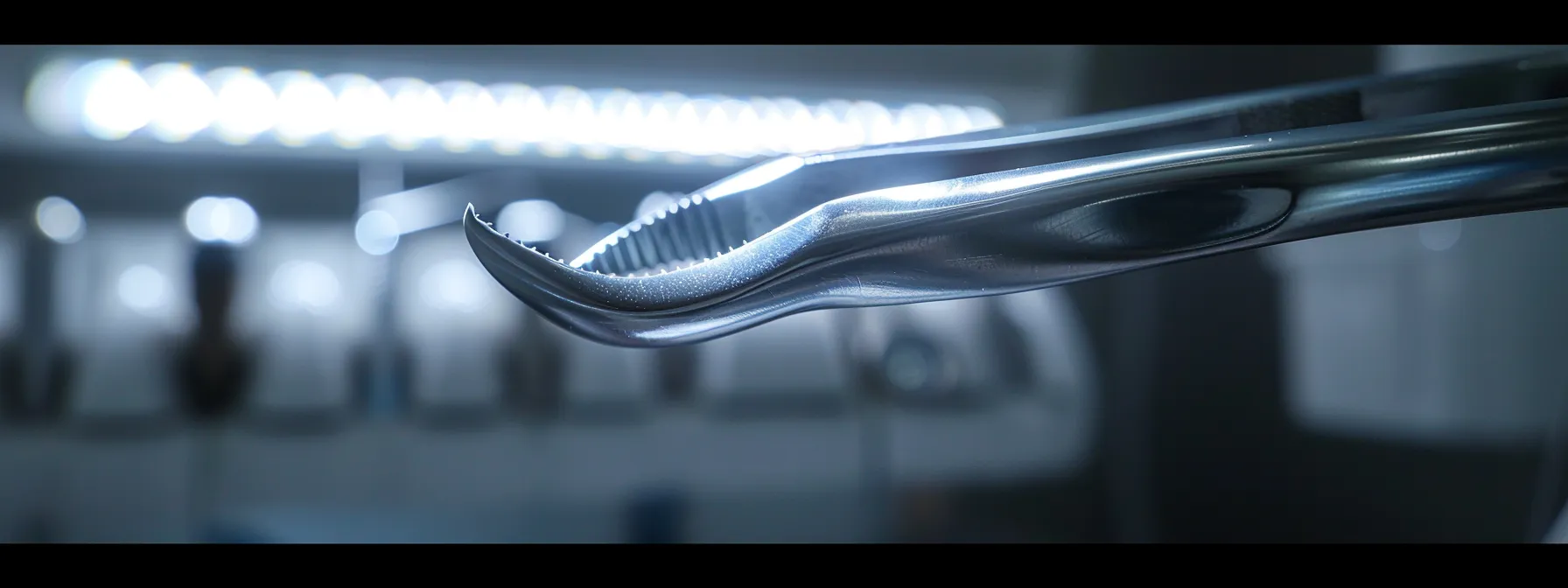
Maintaining and caring for upper molar extraction forceps is essential for ensuring their longevity and optimal performance. This section discusses the importance of cleaning protocols to eliminate pathogens, inspecting for wear and damage to identify potential issues, and proper storage practices that preserve instrument integrity. Additionally, guidelines on when to replace forceps and troubleshooting common problems will be provided, ensuring practitioners can make informed decisions about their instruments.
Cleaning Protocols for Longevity
Cleaning protocols are crucial for maintaining upper molar extraction forceps and ensuring their longevity. Practitioners should follow strict procedures that include rinsing the forceps immediately after use to remove blood and debris, followed by soaking in a disinfectant solution. Regular inspection for signs of wear and corrosion, combined with proper sterilization in an autoclave, not only safeguards the instruments’ integrity but also protects patient health by eliminating pathogens, thereby ensuring the efficacy of dental procedures.
Inspecting for Wear and Damage
Inspecting upper molar extraction forceps for wear and damage is vital for maintaining their functionality and safety. Practitioners should regularly examine the beak and handle for any signs of corrosion, cracks, or deformation that could compromise the instrument’s effectiveness during procedures. This routine inspection helps identify potential issues early, ensuring that tools remain reliable for efficient, safe extractions while minimizing risks to patient outcomes.
Proper Storage Practices
Proper storage practices for upper molar extraction forceps are critical to maintain their integrity and ensure longevity. After thorough cleaning and sterilization, forceps should be stored in a dry, secure environment, ideally in a dedicated storage tray or container that minimizes exposure to contaminants. By organizing instruments this way, dental professionals can ensure quick access during procedures while protecting the forceps from potential damage that could affect their functionality.
When to Replace Your Forceps
Replacing upper molar extraction forceps is crucial when signs of wear, such as corrosion or cracks, become evident, as these imperfections can compromise their effectiveness and safety during dental procedures. Practitioners should routinely assess their instruments post-use, prioritizing tools that show signs of damage to maintain high standards of patient care. If forceps begin to lose their grip or display uneven edges, it is time to consider replacements to ensure the extraction process remains efficient and minimizes trauma to surrounding tissues.
Troubleshooting Common Issues
Practitioners may encounter common issues with upper molar extraction forceps, such as difficulty grasping teeth or compromised handling during procedures. These problems can often arise due to wear, misalignment, or improper cleaning techniques. For example, if forceps cannot securely grip the tooth, it may be necessary to inspect the beak for damage or misalignment, while ensuring that all cleaning protocols are strictly followed to maintain their effectiveness:
| Common Issue | Possible Cause | Solution |
|---|---|---|
| Difficult Grasping of Teeth | Worn or misaligned beak | Inspect and adjust, or replace if necessary |
| Handling Difficulties | Excessive wear on the handles | Evaluate for replacement or repair options |
| Inadequate Cleaning | Improper sterilization techniques | Follow correct cleaning protocols |
Conclusion
Choosing the best upper molar extraction forceps is crucial for achieving successful dental procedures while ensuring patient safety and comfort. Practitioners must consider factors such as ergonomics, material quality, and compatibility with specific tooth types to facilitate efficient extractions. The selection process also benefits from attentiveness to brand reputation and user feedback, guiding informed purchases. Ultimately, investing in the right tools enhances dental practice efficiency and promotes optimal patient outcomes.


